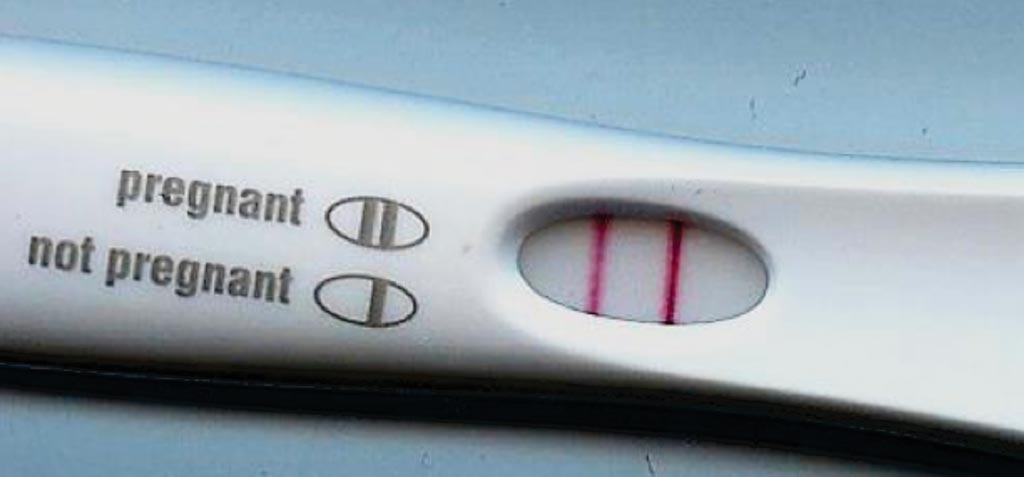Ovarian Reserve Tests Prove Poor Predictors of Fertility
By LabMedica International staff writers
Posted on 24 Oct 2017
Tests that measure a woman’s “ovarian reserve” to estimate how many more years of fertility she has have grown increasingly popular, yet despite the lack of evidence of their utility, biomarkers of ovarian reserve are being promoted as potential markers of reproductive potential.Posted on 24 Oct 2017
Previous studies have correlated levels of the three hormones with the number of eggs a woman has in her ovaries, known as a measure known as “ovarian reserve.” Studies have suggested that information could be used to predict how well a woman will respond to in vitro fertilization. But in recent years, as more women are delaying pregnancy until later ages, ovarian reserve tests have begun to be used as a way to test for future fertility.

Image: A positive pregnancy test; Women with test results indicating low ovarian reserve were no less likely to conceive within six or 12 months of attempts than women whose laboratory tests did not point to a limited egg supply (Photo courtesy of News Health Advisor).
Medical Scientists at the University of North Carolina, (Chapel Hill, NC, USA) carried out a prospective time-to-pregnancy cohort study (2008 to date of last follow-up in March 2016) of 981 women aged 30 to 44 years without a history of infertility who had been trying to conceive for three months or less, recruited from the local community. Their mean age was 33.3 ± 3.2 years; 77% were white; and 36% were overweight or obese. The primary outcomes were the cumulative probability of conception by six and 12 cycles of attempt and relative fecundability (probability of conception in a given menstrual cycle). Conception was defined as a positive pregnancy test result.
The scientists looked the early-follicular-phase serum level of antimüllerian hormone (AMH), follicle-stimulating hormone (FSH), and inhibin B and urinary level of FSH. They found that after adjusting for age, body mass index, race, current smoking status, and recent hormonal contraceptive use, 84 women with low AMH values of less than 0.7 ng/mL did not have a significantly different predicted probability of conceiving by six cycles of attempt (65%) compared with 579 women with normal values (62%) or by 12 cycles of attempt (84% versus 75% respectively). The 83 women with high serum FSH values of greater than 10 mIU/mL did not have a significantly different predicted probability of conceiving after six cycles of attempt compared with 654 women with normal values. Similarly, women with high urinary FSH values of greater than 11.5 mIU/mg creatinine did not have a significantly different predicted probability of conceiving and Inhibin B levels were not associated with the probability of conceiving in a given cycle.
The authors concluded that among women aged 30 to 44 years without a history of infertility who had been trying to conceive for three months or less, biomarkers indicating diminished ovarian reserve compared with normal ovarian reserve were not associated with reduced fertility. The study was published on October 10, 2017, in the Journal of the American Medical Association.
Related Links:
University of North Carolina














